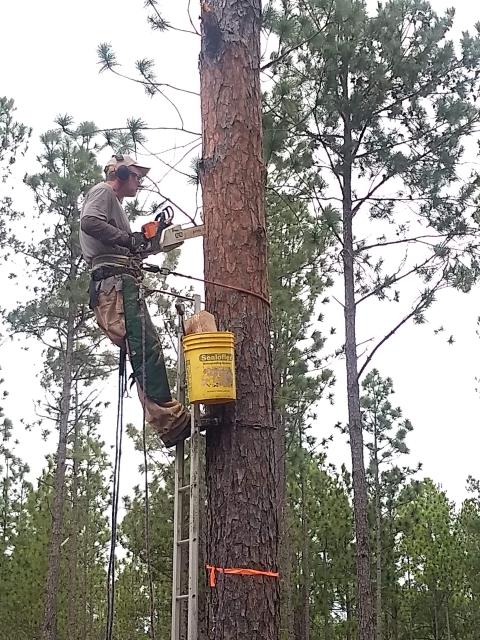To fix something, it helps to first know what you’re dealing with. Take longleaf pine trees, for example.
For more than a decade, the Sandhills Longleaf Pine Conservation Partnership has burned, thinned and managed longleaf pine stands on private lands within a 731-square-mile area. Yet members, including South Carolina Partners for Fish and Wildlife, didn’t really know the quantity (acres) or quality (condition) of older stands of longleaf pine in the target area. So, they decided a forest-condition survey was needed to steer restoration, landscape connectivity and outreach efforts. The four-year survey got underway in 2016.
The study focused on more than 365,000 acres of private land. Forestry interns from Horry-Georgetown Technical College were hired to conduct roadside surveys of dominant tree species, ages of longleaf pines, evidence of prescribed fire and mid- and understory conditions. The results: 27 percent of the land contained longleaf pines; 88 percent were relatively new plantings; and 90 percent were not managed with fire.
PFW biologists played a major role in developing the survey, managing the geodatabase, training interns and crunching the data. So too did Charles Babb, the Sandhills Conservation coordinator.
“The data has been a tremendous benefit to the Partnership in its efforts to contact landowners who may participate in Partners for Fish and Wildlife-funded projects that benefit priority species, including the red-cockaded woodpecker,” Babb said.
So far the survey has identified two private landowners with mature longleaf stands and good connectivity to public lands. There were no RCWs on the properties, though. So the Partners program funded RCW habitat restoration, including tree thinning, mid-story removal of hardwoods and the installation of artificial RCW cavities.
Sure enough, very active RCWs now inhabit the cavities and these private lands are helping the endangered species on the road to recovery.






